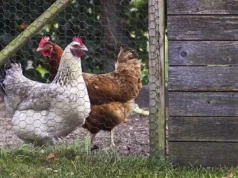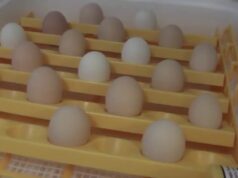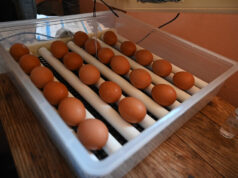Creating the perfect environment for your baby chicks is crucial for their growth and well-being. The ideal temperature for chick brooder is a fundamental aspect of ensuring your chicks enjoy a comfortable start. But what exactly is the right temperature, and why does it matter so much? This guide explores all you need to know about setting the perfect temperature for your chick brooder.

Understanding Brooder Basics
Before we dive into temperatures, it can be helpful to understand the basics of what a chick brooder is. Simply put, a brooder is a heated enclosure that mimics the warmth of a mother hen, offering a safe space for chicks, particularly in their early weeks. Without a proper brooder, chicks might struggle to survive the critical initial phase of their lives. According to Brooder Basics, setting up a proper brooder is the first step towards a healthy flock.
Why Temperature Matters
The ideal temperature for chick brooder is crucial because chicks cannot regulate their body temperature like adult chickens. If the brooder environment is too cold or too hot, it can lead to health problems or even death. Keep in mind that newly hatched chicks require warmer conditions that gradually decrease as they grow. This transition phase typically lasts four to six weeks. For more on this, explore the detailed insights on What is a Chick Brooder.
Setting the Right Brooder Temperature
Week-by-Week Temperature Guide
Setting the right temperature is not only about choosing a number but understanding the needs of your chicks as they grow. Here’s a basic guideline:
- Week 1: 95F (35C)
- Week 2: 90F (32C)
- Week 3: 85F (29C)
- Week 4: 80F (27C)
- Week 5: 75F (24C)
- Week 6: Around the ambient temperature if adequate.
Tools for Measuring Temperature
Accurate measurement is vital. Using a thermometer inside the brooder will ensure you maintain the correct temperature at all times. Position the thermometer at chick level and make adjustments as necessary to keep conditions optimal. Refer to this Baby Chicks Care Sheet for comprehensive guidelines on chick care and temperature management.
Adjustments and Troubleshooting
Signs Chicks are Too Cold
When chicks are too cold, they often huddle together directly under the heat source, chirp loudly, and appear listless. It’s important to quickly address this by checking the temperature and adjusting the heat settings.
Signs Chicks are Overheated
Conversely, if chicks move away from the heat source, pant, or show signs of lethargy and have their wings outstretched, the brooder might be too hot. Be sure the heat lamp or other heating mechanisms are not directly over the chicks at a constant distance.
Types of Brooders and Heat Sources
Types of Brooders
Brooders come in various forms, from simple setups to elaborate systems. You can create your own using materials like a storage bin or a large cardboard box. Learn how to make a chick brooder yourself.
Heat Lamps
Heat lamps are a popular choice but require careful placement to avoid accidents. Always implement safety measures, such as securely hanging the lamp.
Brooder Plates
Alternative methods include using brooder plates, which can be adjusted to fit the height of growing chicks. These plates offer a safer and often more stable heat source.
Maintaining Hygiene in the Brooder
While maintaining the right temperature, it’s equally important to keep the brooder clean. Dirty conditions can lead to diseases, putting your chicks at risk. Daily cleaning of the brooder, along with fresh food and water, promote a healthy environment.
Feeding and Watering Tips
A well-fed chick grows healthy. Ensure access to clean feeders and waterers, appropriate for chicks. Learn more here about feeding techniques and what to avoid.

FAQ: Common Questions on Chick Brooders
1. How do I know if the brooder temperature is correct?
Monitoring chick behavior is key. Chicks that disperse evenly under a lamp or heat source are likely at the right temperature.
2. Can I use a regular household lamp for brooder heat?
Standard household lamps typically do not provide the intense, consistent heat needed for a brooder. Consider investing in a dedicated brooder lamp.
3. At what age can chicks be moved outdoors?
Chicks are typically ready to move outdoors when they are fully feathered, usually between 5-8 weeks, dependent on the local climate.
Ensuring the ideal temperature for chick brooder is vital for the successful growth of your chicks. By maintaining a proactive approach in monitoring temperature and environment, you ensure your chicks have the best start in life.
This article contains affiliate links. We may earn a commission at no extra cost to you.











